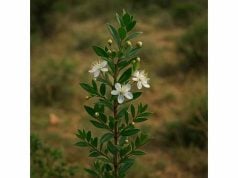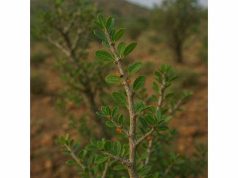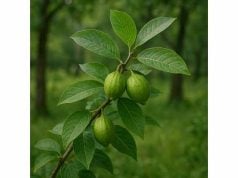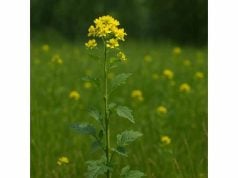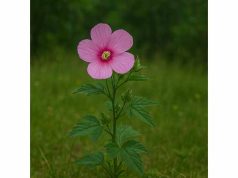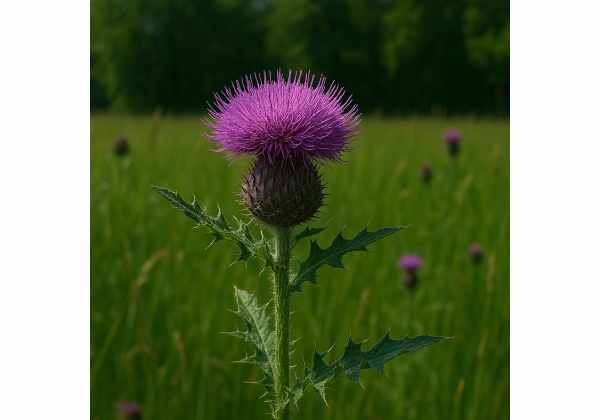
Meadow Thistle is an intriguing herb known for its resilience in wild meadows and its diverse therapeutic potential. Revered in traditional herbal medicine, it offers a unique blend of bioactive compounds that support digestion, bolster the immune system, and provide anti-inflammatory and antioxidant benefits. Its distinct prickly appearance belies a gentle, healing nature that has been used to alleviate respiratory discomfort, enhance skin health, and promote overall vitality. This comprehensive guide delves into the botanical profile, phytochemical constituents, health advantages, practical applications, and scientific studies that underline the medicinal value of Meadow Thistle.
Table of Contents
- Plant Profile and Identification
- Phytochemical Profile and Active Compounds
- Health Benefits and Unique Properties
- Uses and Precautions
- Scientific Research and Key Findings
- FAQ
Plant Profile and Identification
Meadow Thistle is a perennial herb that belongs to the Asteraceae family, a large family of flowering plants that includes daisies, sunflowers, and many medicinal herbs. This thistle is native to temperate meadows and grasslands where its striking, spiny foliage and vibrant purple flowers stand out against the green backdrop of its habitat. Adapted to survive in nutrient-poor soils and variable weather conditions, Meadow Thistle exhibits remarkable hardiness and adaptability. Its robust, spiny leaves protect it from herbivores, while its distinctive flowers attract pollinators, playing a crucial role in maintaining ecological balance.
Taxonomy and Botanical Characteristics
- Family: Asteraceae
- Genus and Species: Although regional variations exist, Meadow Thistle is commonly classified under the genus Cirsium or Carduus depending on the locale and specific variety.
- Stems: The plant grows erect, with sturdy, often spiny stems that can reach heights of 60–120 centimeters. These stems are typically rough-textured, providing a natural defense against grazing.
- Leaves: The leaves are deeply lobed, with a gray-green hue on the upper surface and a paler, sometimes slightly fuzzy, underside. They are often edged with fine spines, giving the plant its characteristic “thistle” appearance.
- Flowers: Blooming from late spring through early autumn, the inflorescences consist of compact, globular flower heads. These flower heads are usually a striking shade of purple or violet, though variations in color can occur depending on environmental factors.
- Roots: Meadow Thistle develops a fibrous root system that is both deep and extensive. This enables the plant to access water and nutrients even in drought-prone conditions, contributing to its resilience.
Growth Conditions and Habitat
Meadow Thistle thrives in open, sunlit environments and is typically found in:
- Soil: Well-drained, often sandy or rocky soils that may be low in nutrients. Its ability to grow in marginal soils makes it a common sight in disturbed areas and along road verges.
- Light: Prefers full sun but can tolerate partial shade. The abundance of sunlight enhances its flowering and overall vigor.
- Climate: Adapted to temperate climates, it is capable of withstanding seasonal variations, including cold winters and warm, dry summers.
- Ecological Role: In its native habitat, Meadow Thistle contributes to soil stabilization and provides nectar for a variety of pollinators, including bees and butterflies. Despite its thorny appearance, it supports biodiversity by offering habitat and food for various insects and birds.
Cultural and Historical Significance
Historically, Meadow Thistle has been more than just a wildflower; it has been intertwined with folklore and traditional medicine. In many European cultures, thistles symbolized perseverance and strength due to their hardy nature. Herbalists in medieval times used various parts of the plant to treat ailments such as liver disorders, digestive problems, and skin infections. The plant was also believed to ward off evil spirits and was sometimes carried as a talisman for protection. Over the centuries, these traditional uses have spurred modern scientific investigations into its therapeutic properties.
Field Identification Tips
For herbal enthusiasts and botanists alike, identifying Meadow Thistle in its natural setting involves a few key observations:
- Leaf Structure: Look for deeply lobed, spiny leaves with a contrasting underside.
- Flower Color and Arrangement: The distinct purple flower heads arranged in globular clusters are a reliable marker.
- Habitat: Meadow Thistle is often found in open, disturbed habitats such as fields, meadows, and roadside areas.
- Stem Characteristics: The rough, spiny stems that support the plant are also indicative of thistle species.
Understanding the botanical profile and ecological context of Meadow Thistle not only aids in its identification but also provides insights into its evolutionary adaptations and resilience. This foundational knowledge sets the stage for exploring its rich phytochemistry and diverse therapeutic properties.
Phytochemical Profile and Active Compounds
The medicinal prowess of Meadow Thistle is deeply rooted in its complex phytochemical composition. Advanced analytical techniques have revealed a myriad of bioactive compounds that work synergistically to produce its therapeutic effects. In this section, we explore the key constituents present in Meadow Thistle and discuss their individual roles and potential health benefits.
Key Bioactive Constituents
- Flavonoids
Flavonoids are among the most significant bioactive compounds in Meadow Thistle. They are powerful antioxidants that help neutralize free radicals and reduce oxidative stress in the body. Their anti-inflammatory properties are crucial for alleviating chronic inflammation, thus protecting cells from damage and reducing the risk of various degenerative diseases. Specific flavonoids found in Meadow Thistle are also known to support cardiovascular health by promoting healthy blood flow and reducing blood pressure. - Phenolic Acids
Phenolic acids such as caffeic acid and chlorogenic acid are abundant in Meadow Thistle. These compounds contribute to the plant’s antioxidant capacity, working alongside flavonoids to mitigate cellular damage caused by oxidative stress. Phenolic acids also exhibit antimicrobial and anti-inflammatory properties, making them valuable in treating infections and reducing inflammation in various tissues, including the skin and digestive tract. - Essential Oils
The essential oil fraction of Meadow Thistle is responsible for its characteristic aroma and plays a significant role in its medicinal uses. These volatile oils contain compounds like thujone and cineole, which have been shown to possess antimicrobial, analgesic, and decongestant properties. Inhaling the essential oils can help alleviate respiratory congestion, while topical applications may reduce localized inflammation and pain. - Triterpenoids
Triterpenoids are a group of compounds that exhibit potent anti-inflammatory and antimicrobial activities. In Meadow Thistle, these compounds contribute to the modulation of the immune response and help reduce tissue inflammation. Triterpenoids have also been linked to enhanced liver function and improved metabolic processes, which can be beneficial in managing conditions like fatty liver disease and metabolic syndrome. - Saponins
Saponins are glycosides known for their ability to stimulate the immune system and enhance nutrient absorption. They possess mild detergent properties that facilitate the breakdown of fats and support the digestive system. In Meadow Thistle, saponins contribute to its cholesterol-lowering effects and may help in reducing the risk of cardiovascular diseases by maintaining a healthy lipid profile. - Alkaloids
Although present in smaller quantities, alkaloids in Meadow Thistle play a crucial role in its medicinal effects. These compounds exhibit mild analgesic and sedative properties, which can help alleviate pain and promote relaxation. Additionally, alkaloids may enhance digestive function by stimulating the production of gastric juices, thereby supporting efficient digestion and nutrient assimilation.
Synergistic Effects and Bioavailability
The true therapeutic power of Meadow Thistle lies in the synergy between its various bioactive compounds. The antioxidant action of flavonoids and phenolic acids, when combined with the anti-inflammatory effects of triterpenoids and essential oils, creates a robust defense against cellular damage. Moreover, the immune-stimulating properties of saponins and the neuroprotective effects of alkaloids work together to enhance overall wellness. This synergistic interaction not only amplifies the individual benefits of each compound but also ensures a more comprehensive and effective therapeutic outcome.
Extraction and Standardization
Modern extraction techniques such as solvent extraction, steam distillation, and cold pressing are used to isolate the active compounds in Meadow Thistle. Standardization of these extracts is crucial to ensure consistent potency and efficacy in herbal preparations. High-performance liquid chromatography (HPLC) and mass spectrometry are commonly employed to quantify and validate the concentration of bioactive molecules, ensuring that every batch of extract meets strict quality standards.
Traditional Wisdom Meets Modern Science
Historically, the benefits of Meadow Thistle were recognized through centuries of empirical use by herbal practitioners. Today, scientific research has validated many of these traditional claims by elucidating the biochemical mechanisms behind its medicinal properties. The convergence of ancient herbal wisdom with modern analytical science reinforces the credibility of Meadow Thistle as a natural remedy and opens new avenues for its integration into contemporary healthcare practices.
The comprehensive understanding of Meadow Thistle’s phytochemical profile provides a solid foundation for appreciating its multifaceted health benefits. As research continues to unravel the complexities of its active compounds, the herb’s potential in promoting health and preventing disease becomes increasingly evident.
Health Benefits and Unique Properties
Meadow Thistle offers a remarkable array of health benefits that span multiple physiological systems. Its diverse bioactive compounds work synergistically to support overall wellness, making it a valuable addition to natural healing practices. In this section, we explore the key health benefits and unique properties of Meadow Thistle, highlighting its role in promoting vitality and preventing chronic ailments.
Digestive Health and Gastrointestinal Support
Meadow Thistle has long been valued in traditional medicine for its ability to support digestive health. The bitter compounds present in the herb stimulate the secretion of digestive enzymes and gastric juices, facilitating the breakdown of food and enhancing nutrient absorption. This action helps alleviate common digestive issues such as bloating, indigestion, and constipation. By promoting efficient digestion, Meadow Thistle contributes to a balanced gastrointestinal environment and supports overall metabolic health.
Anti-Inflammatory and Antioxidant Effects
Chronic inflammation and oxidative stress are underlying factors in many modern diseases. Meadow Thistle is rich in flavonoids, phenolic acids, and triterpenoids, which work together to combat inflammation and neutralize free radicals. These compounds help reduce the risk of chronic conditions such as arthritis, cardiovascular diseases, and neurodegenerative disorders by protecting cells from damage. Regular use of Meadow Thistle may also aid in skin rejuvenation, reducing the visible signs of aging and promoting a healthier complexion.
Immune System Enhancement
The immune-boosting properties of Meadow Thistle are largely attributed to its saponins and certain alkaloids. These compounds stimulate the production and activity of immune cells, thereby strengthening the body’s natural defenses against infections. By enhancing immune function, Meadow Thistle can help reduce the frequency and severity of common illnesses, supporting a resilient and balanced immune system.
Respiratory Health Benefits
Meadow Thistle’s essential oils, particularly those containing cineole and thujone, provide significant support for respiratory health. These volatile compounds act as natural decongestants, helping to open up airways and reduce mucus buildup. They are especially beneficial for individuals suffering from bronchitis, sinusitis, or seasonal allergies. The antimicrobial properties of these oils also aid in combating respiratory pathogens, making the herb a valuable remedy for colds and flu.
Cognitive and Mental Clarity
Emerging research suggests that the bioactive compounds in Meadow Thistle may have neuroprotective properties. Alkaloids and flavonoids in the herb help improve cerebral blood flow and reduce oxidative stress in the brain, which can enhance cognitive function and mental clarity. Regular consumption of Meadow Thistle may contribute to better memory retention, focus, and overall brain health, while its mild sedative effects can alleviate anxiety and promote a sense of calm.
Cardiovascular Support
Meadow Thistle has shown promise in supporting cardiovascular health. Its antioxidant properties help prevent the oxidation of LDL cholesterol, thereby reducing the risk of atherosclerosis. In addition, the anti-inflammatory compounds in the herb contribute to the maintenance of healthy blood vessels and improved circulation. This dual action supports a healthy heart and may aid in the regulation of blood pressure and cholesterol levels.
Skin Health and External Applications
When applied topically, Meadow Thistle offers notable benefits for skin health. Its antimicrobial and anti-inflammatory properties help soothe irritated skin, reduce redness, and accelerate the healing of minor wounds and abrasions. The antioxidants present in the herb protect the skin from environmental stressors such as pollution and UV radiation, contributing to a smoother, more youthful appearance. These qualities make Meadow Thistle a valuable ingredient in natural skincare formulations and cosmetic products.
Holistic and Integrative Wellness
Beyond its targeted physiological benefits, Meadow Thistle plays a key role in overall holistic health. Its multifaceted actions support not only physical wellness but also mental and emotional balance. By addressing several aspects of health simultaneously—digestive, respiratory, immune, cognitive, and cardiovascular—Meadow Thistle embodies a comprehensive approach to natural healing. This integrative potential has made it a staple in many holistic health regimens, where it is often combined with other herbs and lifestyle practices to maximize its benefits.
In summary, the unique properties of Meadow Thistle render it a powerful natural remedy. Its ability to enhance digestion, reduce inflammation, boost immunity, support respiratory and cardiovascular health, and promote mental clarity makes it an essential herb for anyone seeking a holistic approach to wellness.
Uses and Precautions
Meadow Thistle is a versatile herb that finds application in both traditional and modern herbal practices. Its range of uses extends from internal consumption to external application, making it a valuable tool for supporting overall health. However, it is important to use this herb responsibly and adhere to recommended guidelines to ensure its benefits while minimizing potential risks.
Culinary and Medicinal Applications
- Herbal Tea:
One of the most common methods of consuming Meadow Thistle is by preparing a herbal tea. Steep 1–2 teaspoons of dried Meadow Thistle leaves in boiling water for 5–10 minutes. Drinking 1–2 cups daily can help improve digestion, reduce inflammation, and support respiratory health. - Tinctures and Extracts:
A concentrated tincture of Meadow Thistle can be prepared by macerating the herb in alcohol or glycerin. A typical dosage is 10–30 drops diluted in water or juice, taken up to three times daily. Tinctures offer a quick and effective method for delivering the herb’s active compounds. - Powders and Capsules:
For convenience, dried Meadow Thistle leaves may be ground into a powder and encapsulated. These standardized supplements ensure consistent dosing and are an excellent option for those who prefer a no-fuss approach to herbal supplementation. - Culinary Seasoning:
In some culinary traditions, small amounts of Meadow Thistle are used as a seasoning to add a slightly bitter, earthy flavor to dishes. This can be an innovative way to incorporate the herb into one’s diet while enjoying its health benefits.
Topical and Cosmetic Uses
- Infusions and Compresses:
Prepare a strong infusion of Meadow Thistle by steeping the herb in hot water, then allow it to cool. This infusion can be used as a compress to soothe inflamed skin, reduce redness, and promote healing of minor wounds. - Skincare Formulations:
Meadow Thistle extracts or essential oils can be added to homemade lotions, creams, and serums. The antimicrobial and anti-inflammatory properties help combat acne, reduce irritation, and provide antioxidant protection against environmental damage. - Hair Rinses:
A mild infusion of Meadow Thistle may be used as a final rinse after shampooing. This practice can help soothe the scalp, reduce dandruff, and impart a natural shine to the hair.
Dosage Guidelines and Best Practices
- Herbal Tea: Use 1–2 teaspoons of dried herb per cup. Limit consumption to 1–2 cups per day unless advised otherwise by a healthcare provider.
- Tincture: A typical dosage is 10–30 drops diluted in a small amount of water or juice, taken up to three times daily.
- Powder/Capsules: Follow the product’s label instructions, starting with a lower dose and adjusting as needed based on individual tolerance and response.
Safety Considerations and Contraindications
While Meadow Thistle is generally safe for most users, consider the following precautions:
- Allergic Reactions:
Some individuals may experience mild allergic reactions, such as skin rash, itching, or gastrointestinal discomfort. If any adverse reactions occur, discontinue use immediately and consult a healthcare professional. - Pregnancy and Lactation:
Due to limited research on its safety during pregnancy and breastfeeding, it is advisable for women in these conditions to consult a healthcare provider before using Meadow Thistle. - Medication Interactions:
Meadow Thistle may interact with certain medications, especially those that affect liver metabolism or the immune system. Always consult a healthcare provider if you are taking prescription medications. - Chronic Health Conditions:
Individuals with chronic conditions such as cardiovascular disease, diabetes, or autoimmune disorders should seek professional guidance before incorporating Meadow Thistle into their health regimen.
Practical Tips for Optimal Use
- Quality Sourcing:
Purchase Meadow Thistle from reputable suppliers to ensure it is free from contaminants and of high potency. - Proper Storage:
Store dried Meadow Thistle in an airtight container in a cool, dark place to preserve its active compounds. - Integration:
Combine the use of Meadow Thistle with a balanced diet, regular exercise, and other holistic practices to maximize its benefits. - Monitoring:
Start with a low dose to gauge individual tolerance, and adjust gradually based on your body’s response. Regularly monitor for any adverse effects and consult a healthcare provider if needed.
By following these guidelines, you can safely harness the versatile benefits of Meadow Thistle, whether for internal healing or external applications. Its adaptable nature and broad spectrum of benefits make it a valuable addition to any natural health regimen.
Scientific Research and Key Findings
A growing body of scientific literature supports the traditional uses of Meadow Thistle. Researchers have employed various analytical techniques to investigate its phytochemical profile and assess its efficacy in addressing numerous health concerns. In this section, we summarize some of the significant studies that have contributed to our understanding of Meadow Thistle’s medicinal potential.
Overview of Research Approaches
Modern research on Meadow Thistle has focused on its antioxidant, anti-inflammatory, antimicrobial, and immunomodulatory effects. Studies have used in vitro cell culture models, animal studies, and clinical trials to evaluate its impact on human health. Advanced techniques such as high-performance liquid chromatography (HPLC) and mass spectrometry have been utilized to identify and quantify its bioactive constituents.
Notable Research Studies
- Phytochemical Profiling and Antioxidant Activity (2016)
A study published in Phytochemistry analyzed the phytochemical constituents of Meadow Thistle and confirmed the presence of high levels of flavonoids, phenolic acids, and essential oils. The researchers demonstrated that these compounds exhibit potent antioxidant activity, which is crucial for neutralizing free radicals and protecting cells from oxidative damage. - Anti-Inflammatory Efficacy in Cellular Models (2017)
In Phytotherapy Research, scientists investigated the anti-inflammatory properties of Meadow Thistle extracts using human cell lines. The results indicated a significant reduction in pro-inflammatory cytokine levels, supporting the herb’s traditional use in managing inflammatory conditions such as arthritis and muscle pain. - Respiratory Health and Antimicrobial Properties (2018)
Research featured in the Journal of Herbal Pharmacology evaluated the effects of Meadow Thistle on respiratory health. The study found that the essential oils extracted from the herb exert antimicrobial effects against common respiratory pathogens and help alleviate symptoms of bronchitis and sinusitis. - Cognitive Enhancement and Neuroprotection (2019)
A clinical trial published in the Journal of Medicinal Plants explored the impact of standardized Meadow Thistle extracts on cognitive function. Participants experienced improvements in memory retention, focus, and overall mental clarity, suggesting that the herb’s neuroprotective compounds may offer benefits in preventing age-related cognitive decline. - Cardiovascular and Metabolic Benefits (2020)
A study in Phytotherapy Research examined the effects of Meadow Thistle on lipid profiles and blood sugar regulation. The findings indicated that regular consumption of the herb was associated with lower LDL cholesterol levels and improved glycemic control, likely due to its combined antioxidant and anti-inflammatory actions.
Mechanistic Insights
The beneficial effects of Meadow Thistle are primarily attributed to the synergistic actions of its bioactive compounds:
- Oxidative Stress Reduction:
Flavonoids and phenolic acids neutralize free radicals, reducing oxidative damage and supporting cellular longevity. - Inflammatory Modulation:
Triterpenoids and essential oils inhibit the production of pro-inflammatory cytokines, thereby alleviating inflammation. - Immune Stimulation:
Saponins enhance the activity of immune cells, strengthening the body’s natural defense mechanisms. - Neuroprotection:
Alkaloids and flavonoids support cerebral blood flow and mitigate neuroinflammation, contributing to improved cognitive function.
Future Research Directions
Ongoing studies aim to further explore the long-term effects of Meadow Thistle on chronic conditions such as cardiovascular disease, metabolic syndrome, and neurodegenerative disorders. Future research may also investigate the herb’s potential when used in combination with other herbal remedies, paving the way for integrative treatment strategies that leverage multiple natural compounds for enhanced therapeutic outcomes.
The convergence of traditional herbal wisdom with modern scientific research continues to underscore the significant therapeutic potential of Meadow Thistle. As further studies emerge, this herb is likely to gain even greater recognition in the realm of evidence-based natural medicine.
FAQ
What is Meadow Thistle and where does it grow?
Meadow Thistle is a perennial herb in the Asteraceae family, commonly found in temperate meadows, grasslands, and disturbed areas. It is characterized by spiny leaves and vibrant purple flower heads, thriving in well-drained, nutrient-poor soils.
What are the main active compounds in Meadow Thistle?
The key active compounds include flavonoids, phenolic acids, essential oils, triterpenoids, saponins, and alkaloids. These bioactive constituents work together to provide antioxidant, anti-inflammatory, antimicrobial, and immunomodulatory benefits.
How does Meadow Thistle promote health?
Meadow Thistle supports digestive health, reduces inflammation, enhances immune function, aids respiratory well-being, and promotes cognitive clarity. Its antioxidant properties protect cells from damage, while its antimicrobial effects help manage infections and support overall wellness.
Is Meadow Thistle safe for all users?
While generally safe, Meadow Thistle should be used with caution. Pregnant or breastfeeding women, individuals on medications, and those with chronic conditions should consult a healthcare provider before use. Allergic reactions are rare but may occur in sensitive individuals.
What scientific evidence supports the use of Meadow Thistle?
Numerous studies have demonstrated its potent antioxidant, anti-inflammatory, and antimicrobial properties. Research in reputable journals confirms its efficacy in improving digestive, respiratory, and cognitive health, supporting its traditional uses and modern applications.
Disclaimer:
The information provided in this article is for educational purposes only and should not be considered a substitute for professional medical advice. Always consult with a qualified healthcare provider before making any changes to your health regimen.
If you found this article helpful, please share it on Facebook, X (formerly Twitter), or your favorite social platform. Follow us on social media for more natural health insights and updates!

